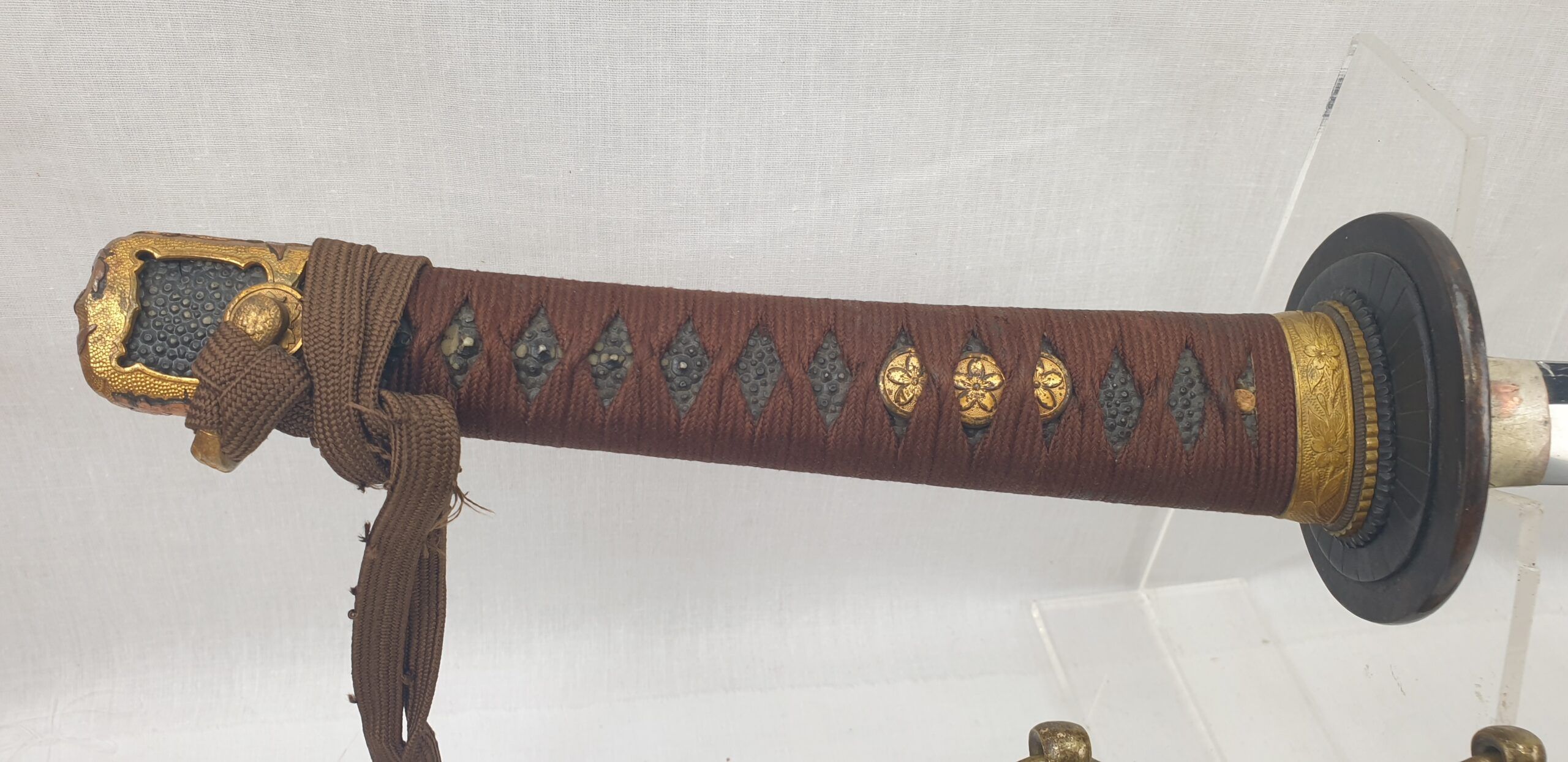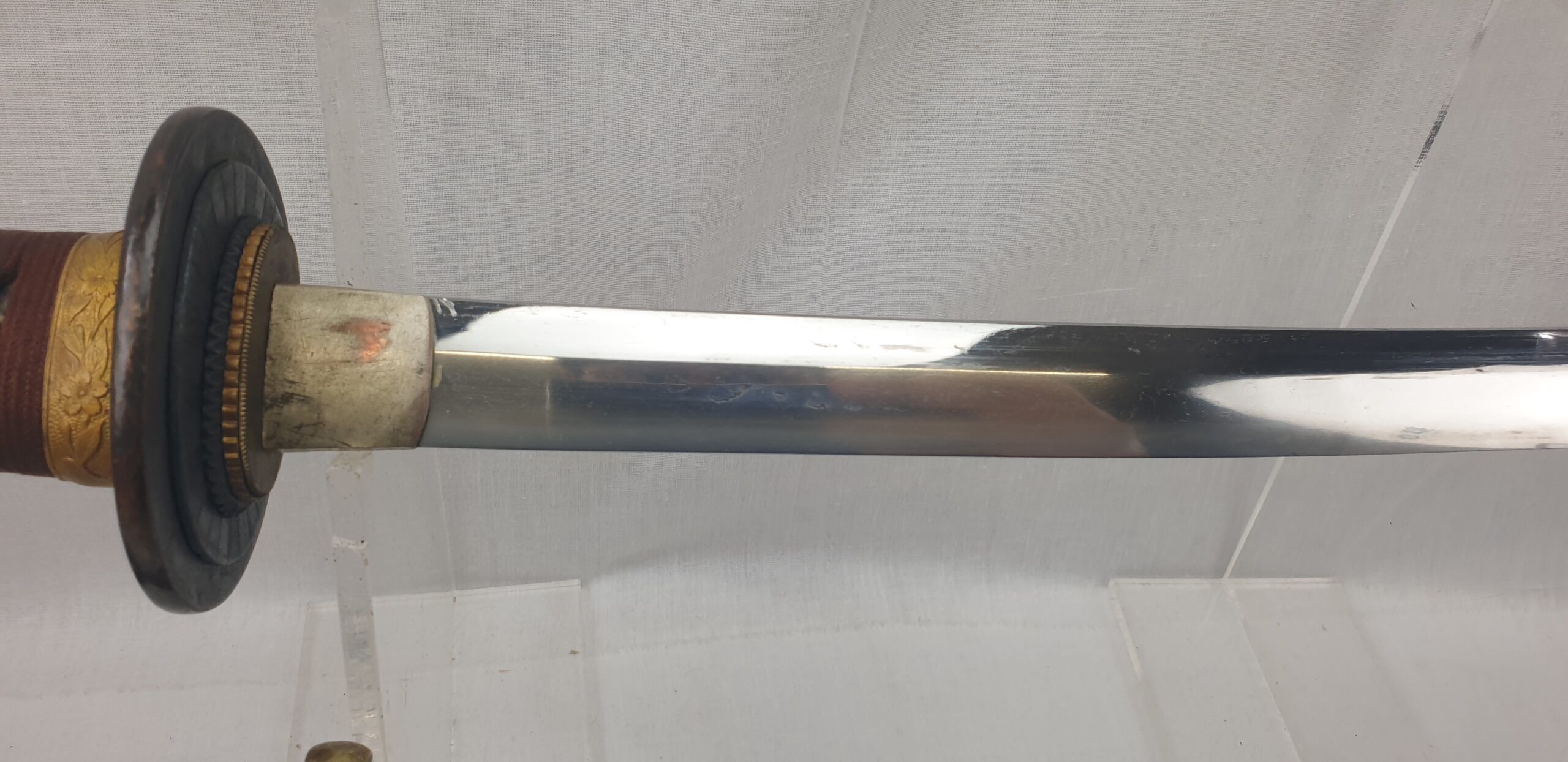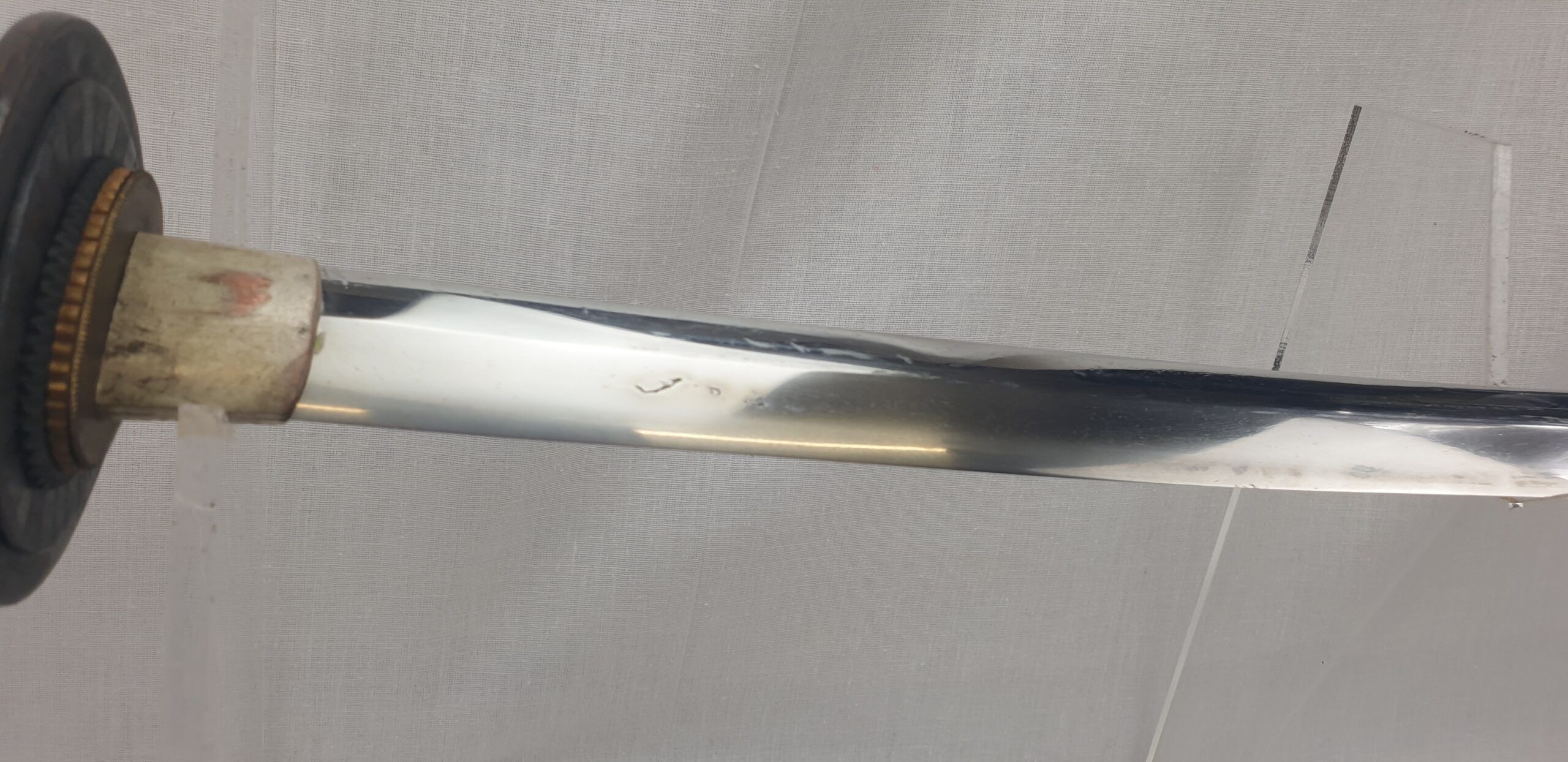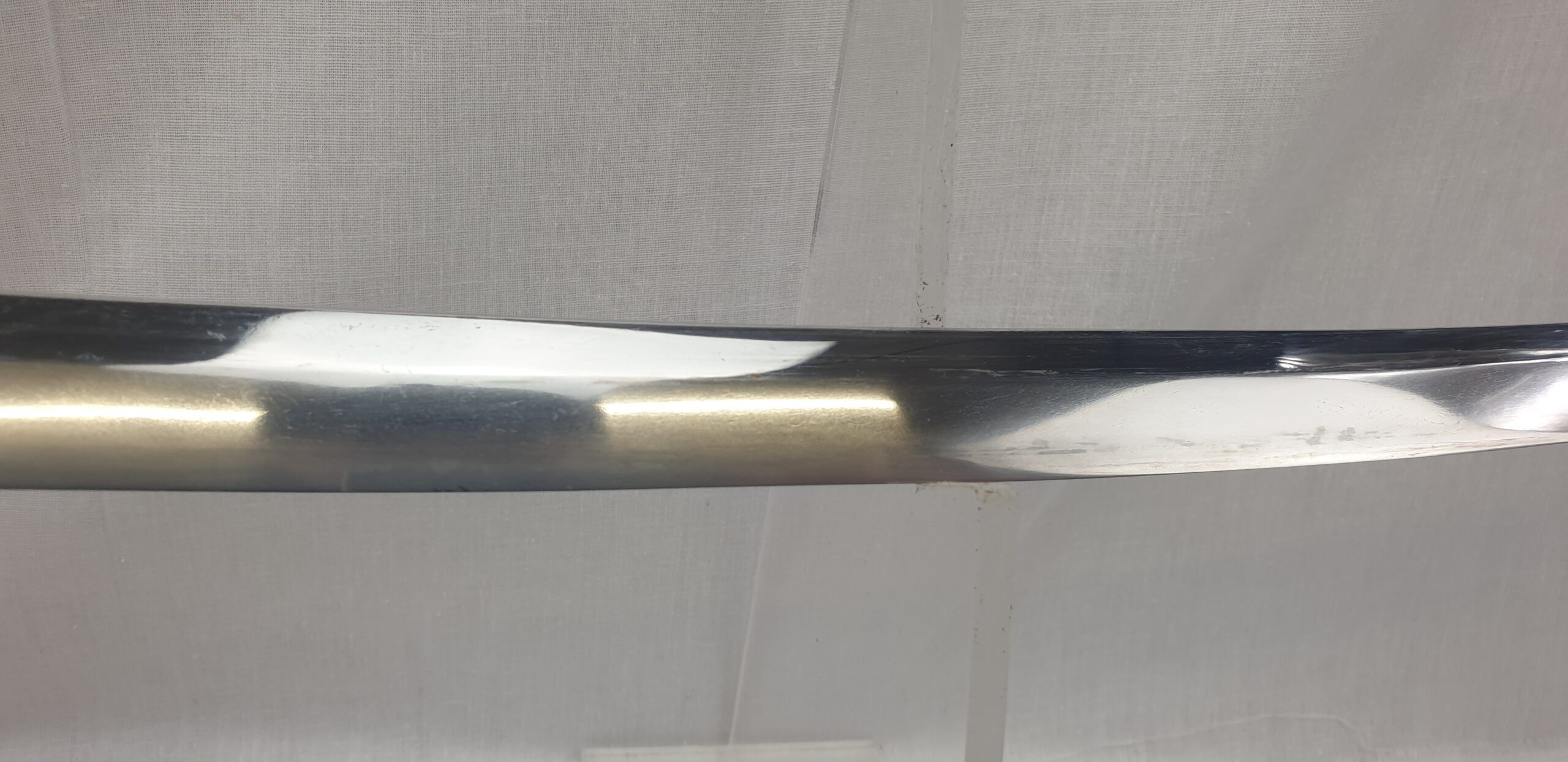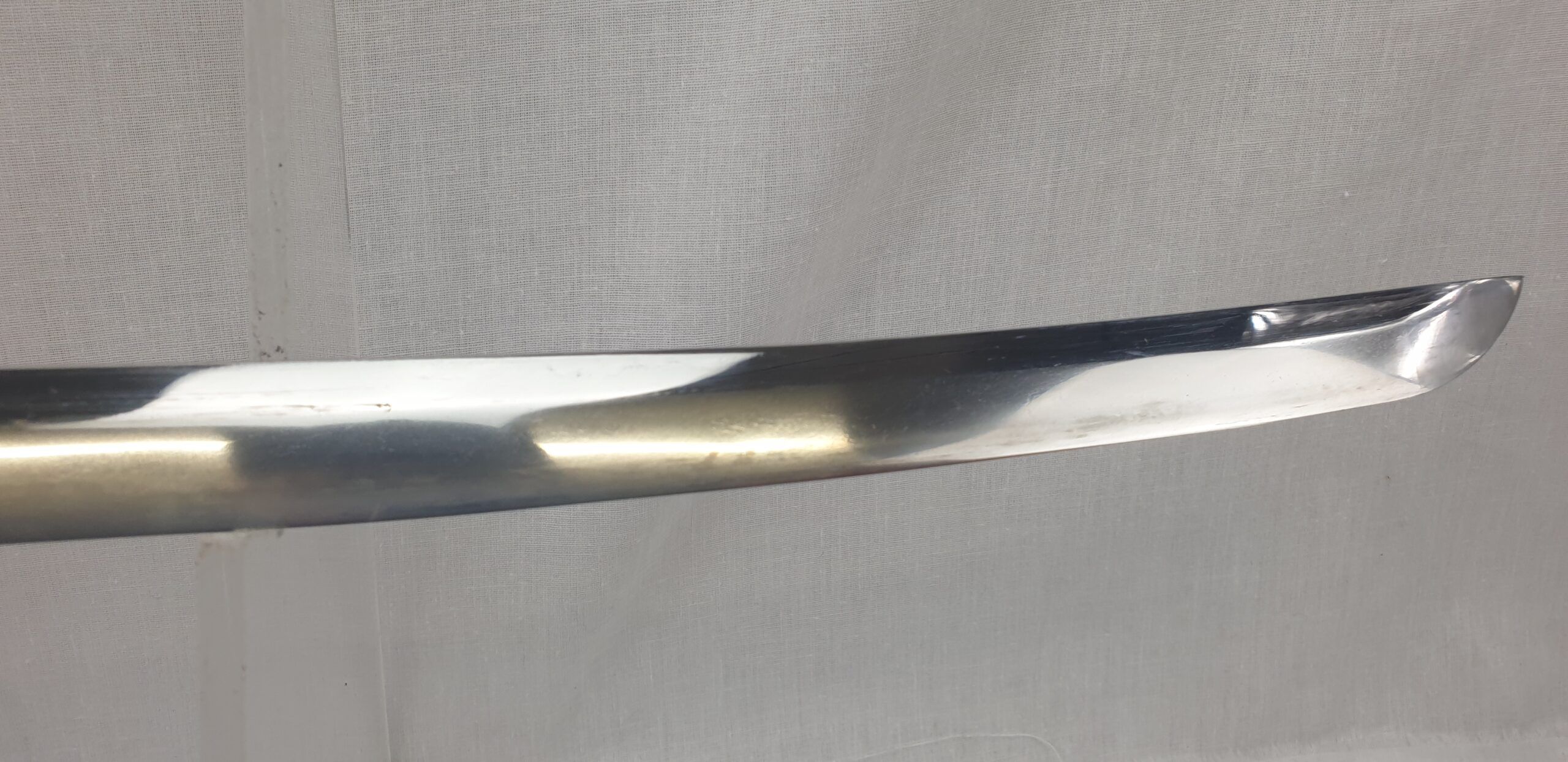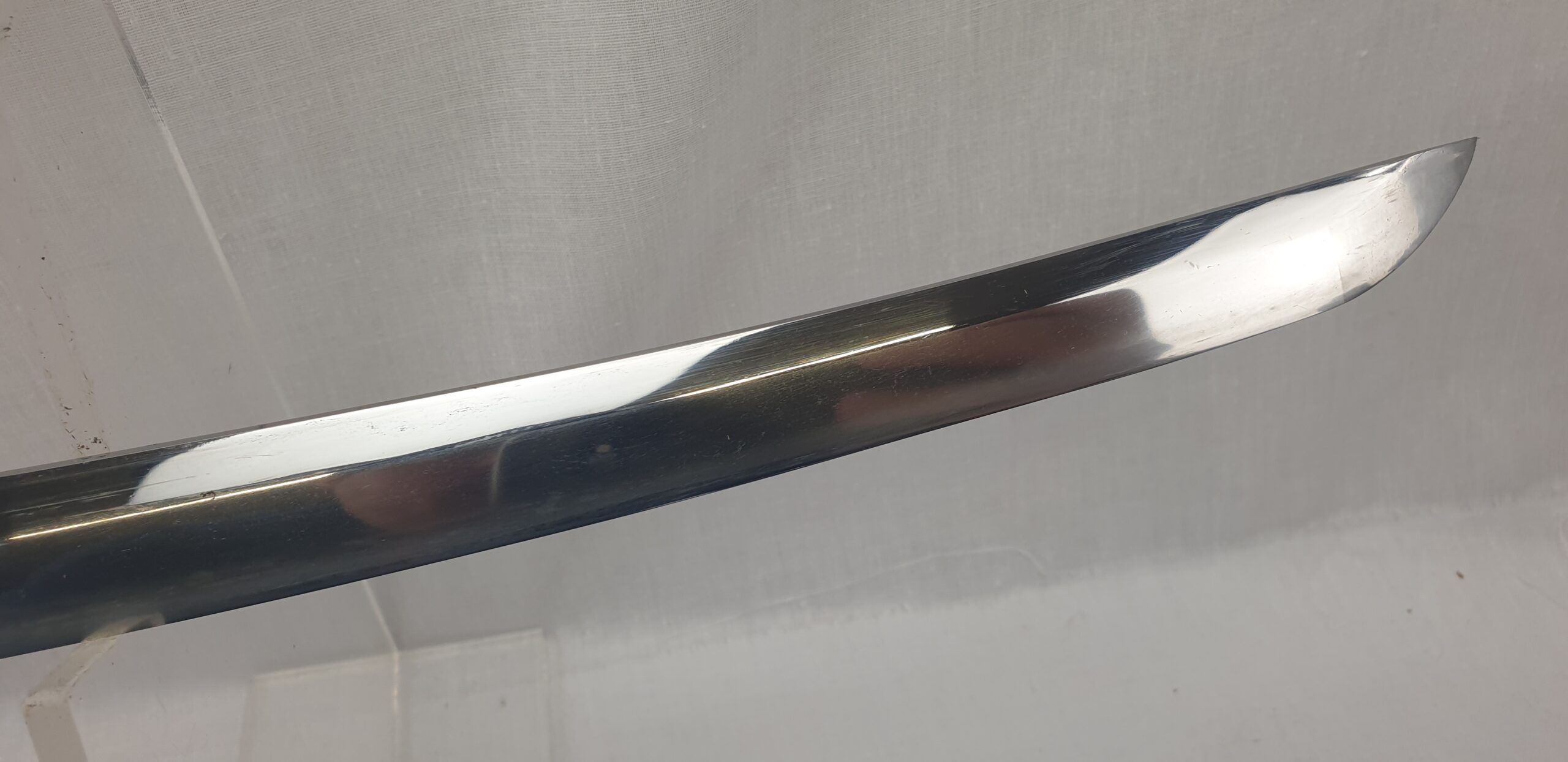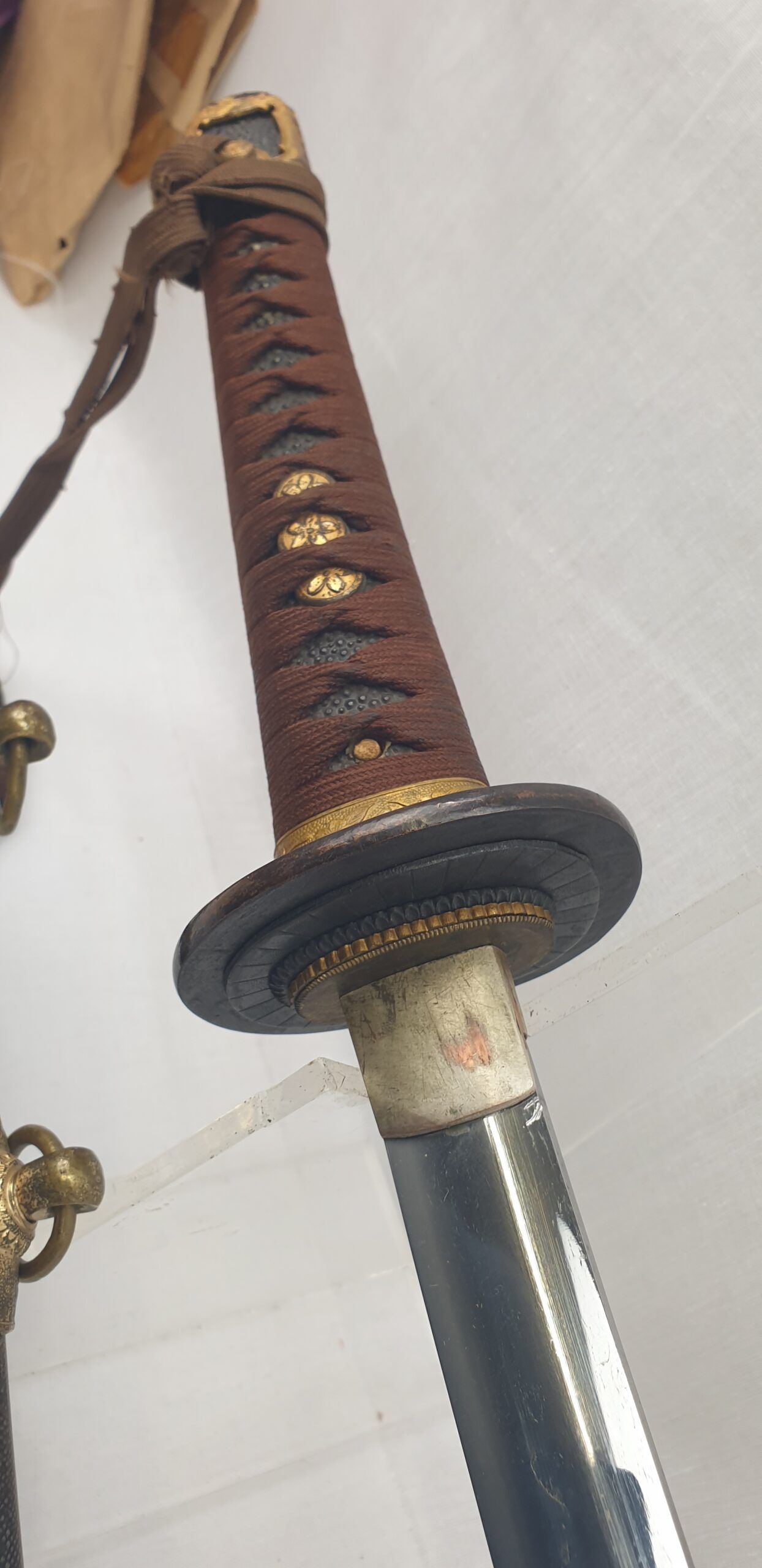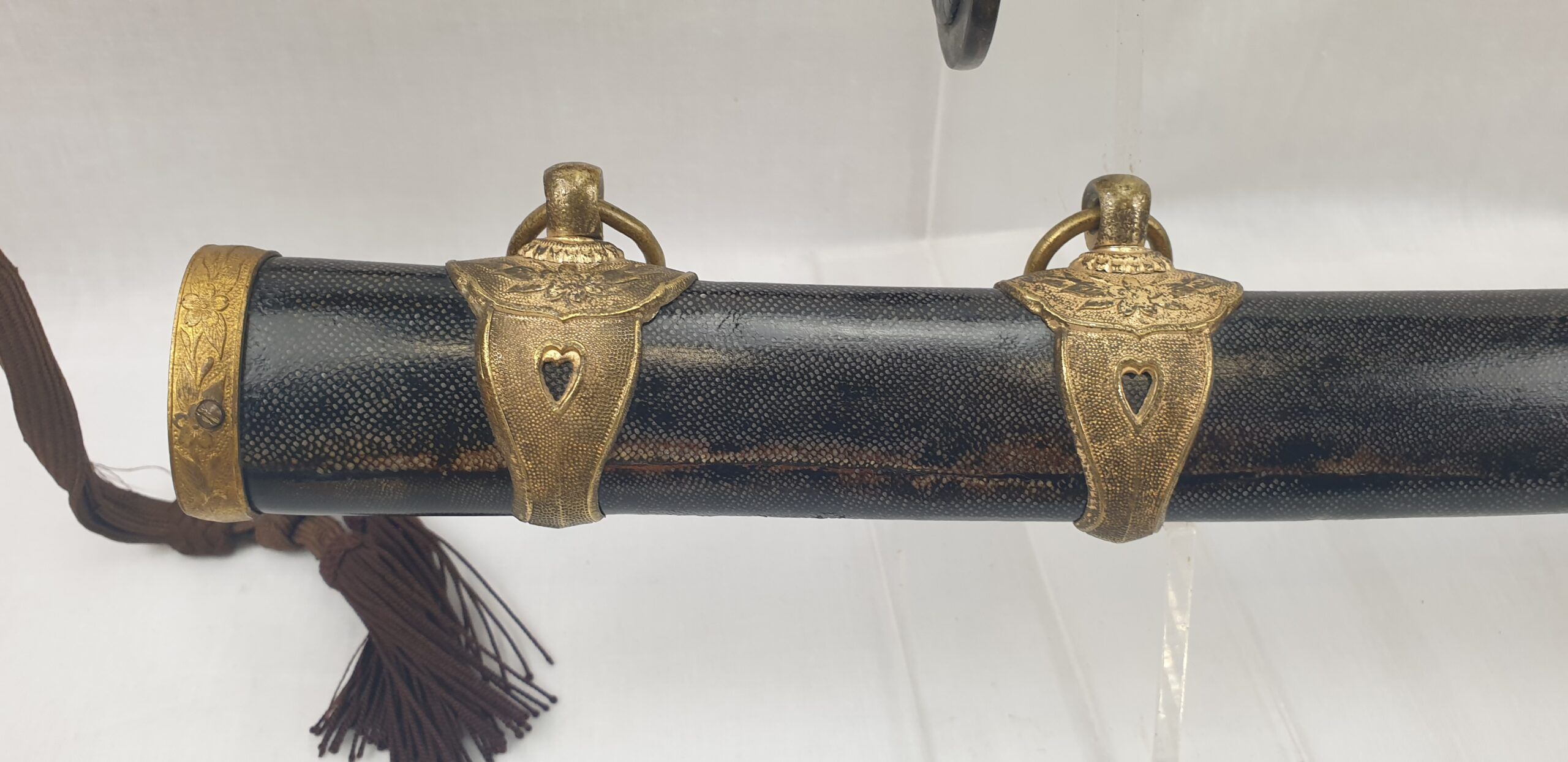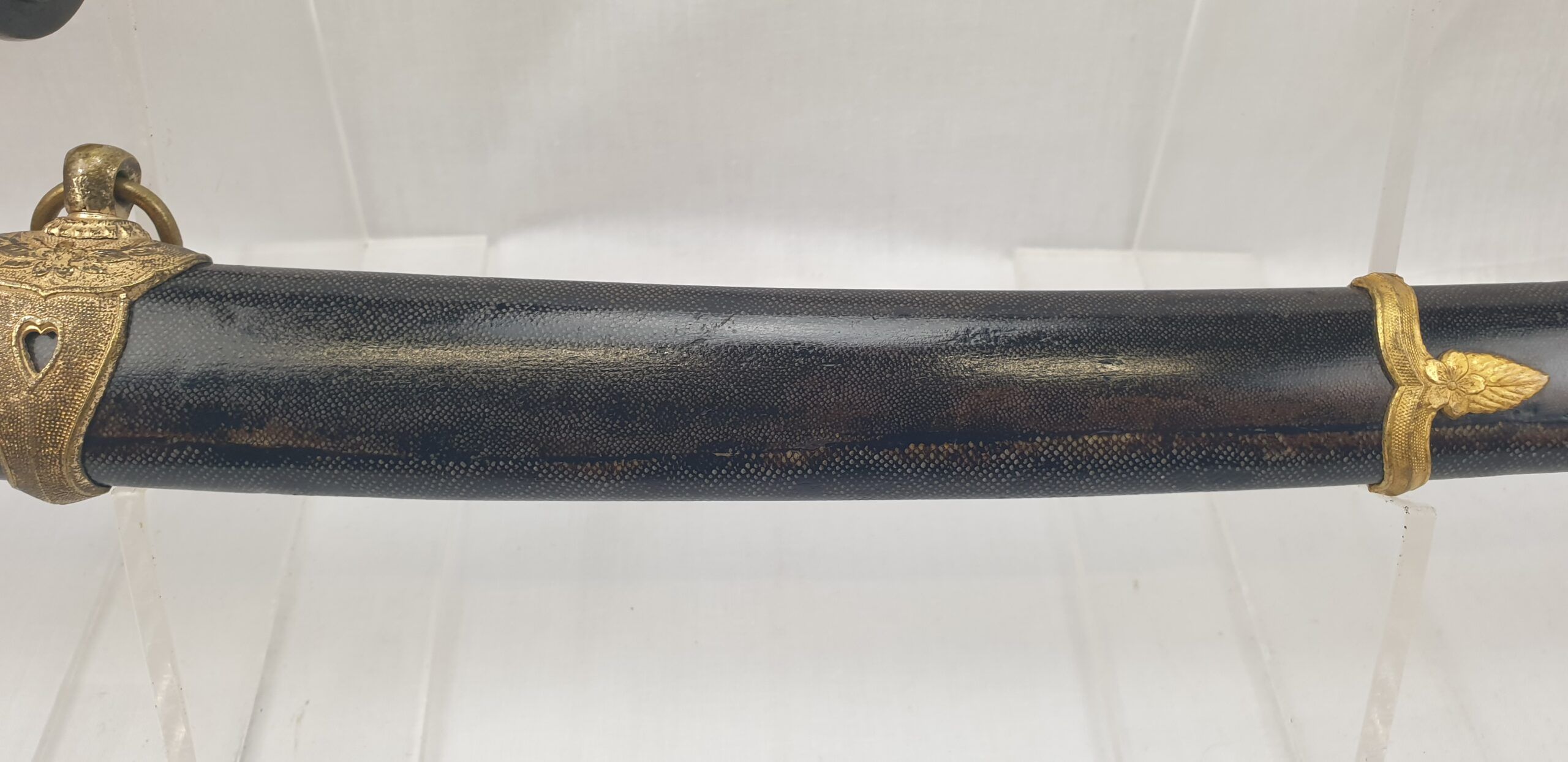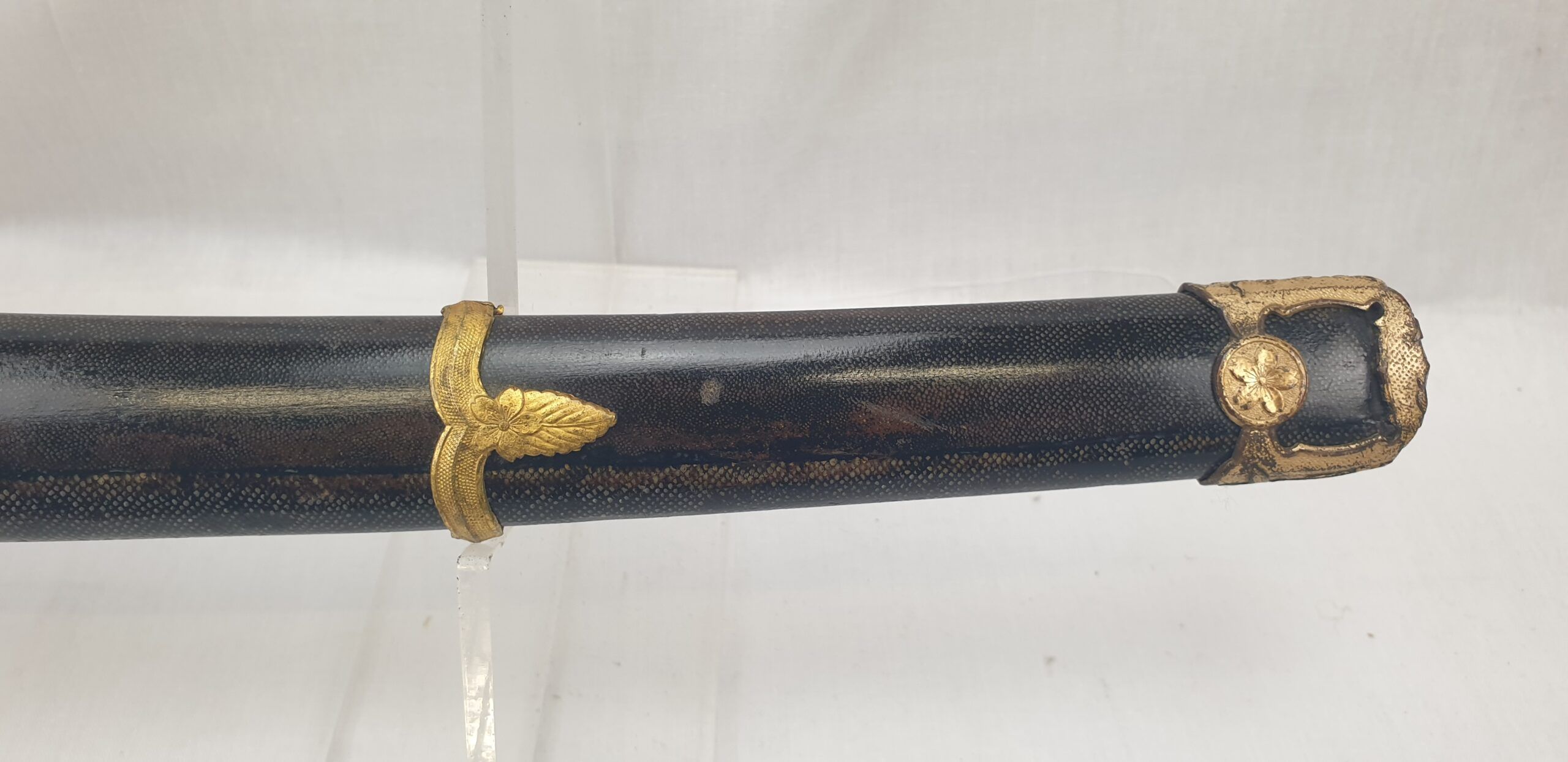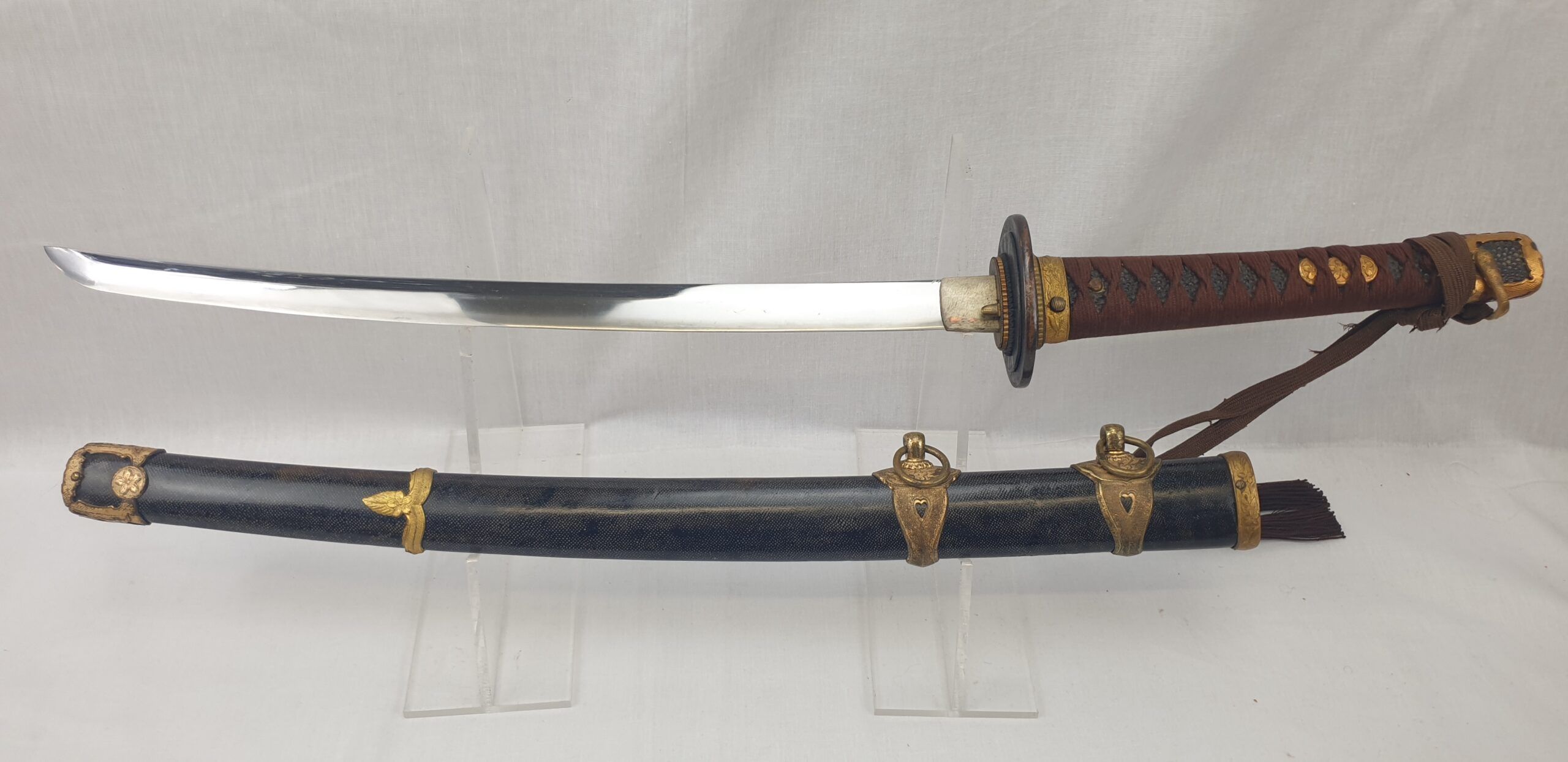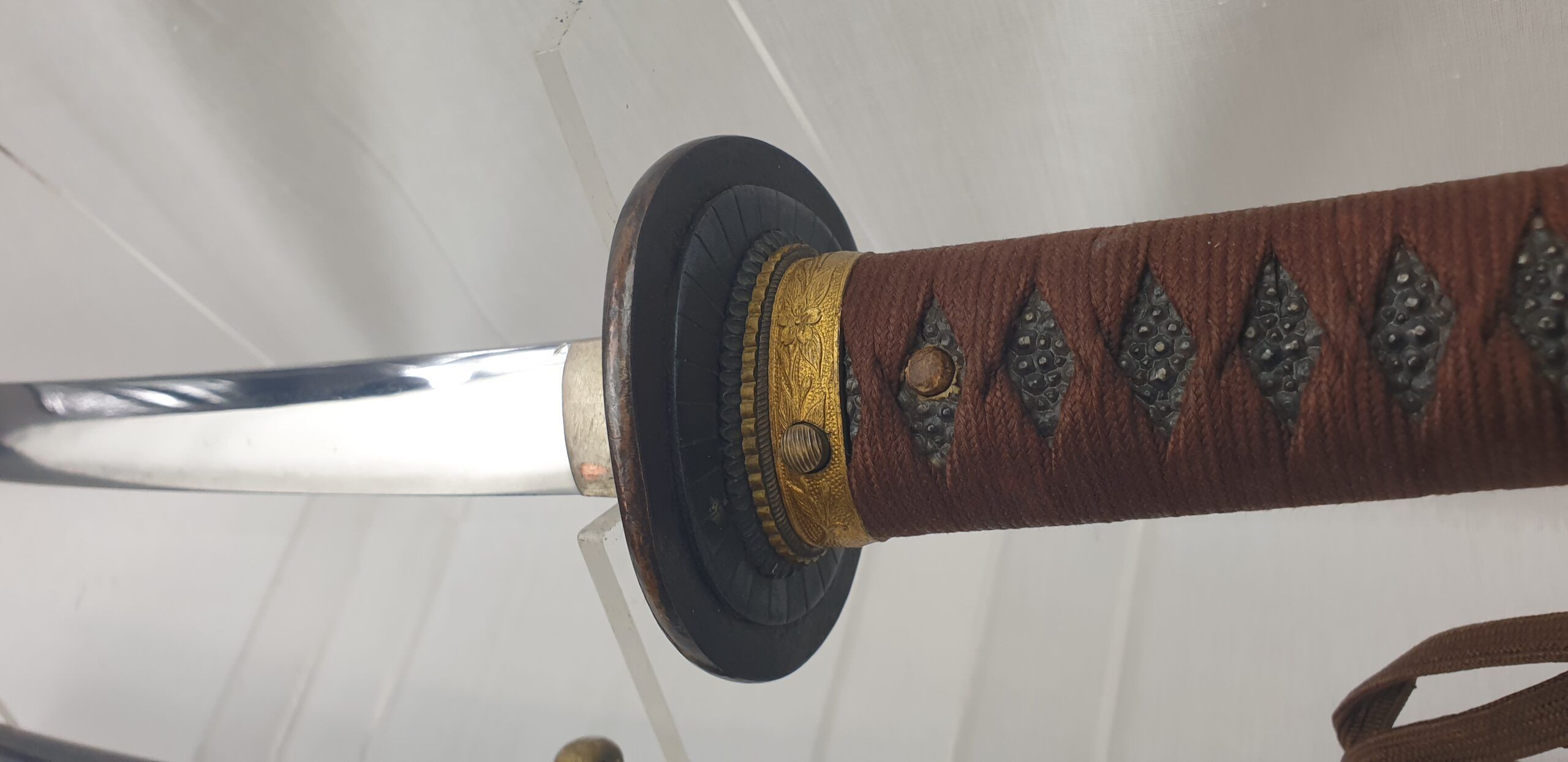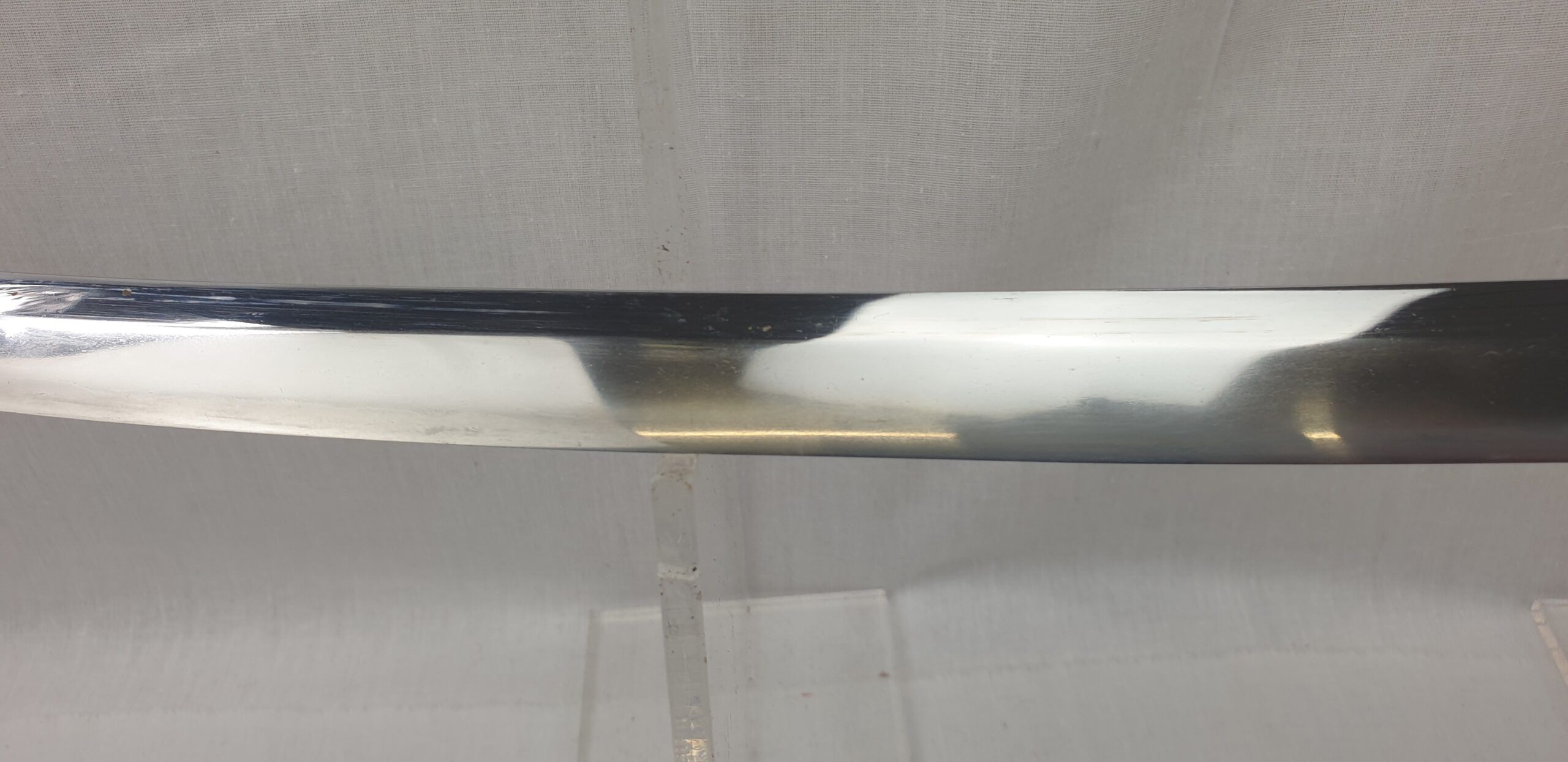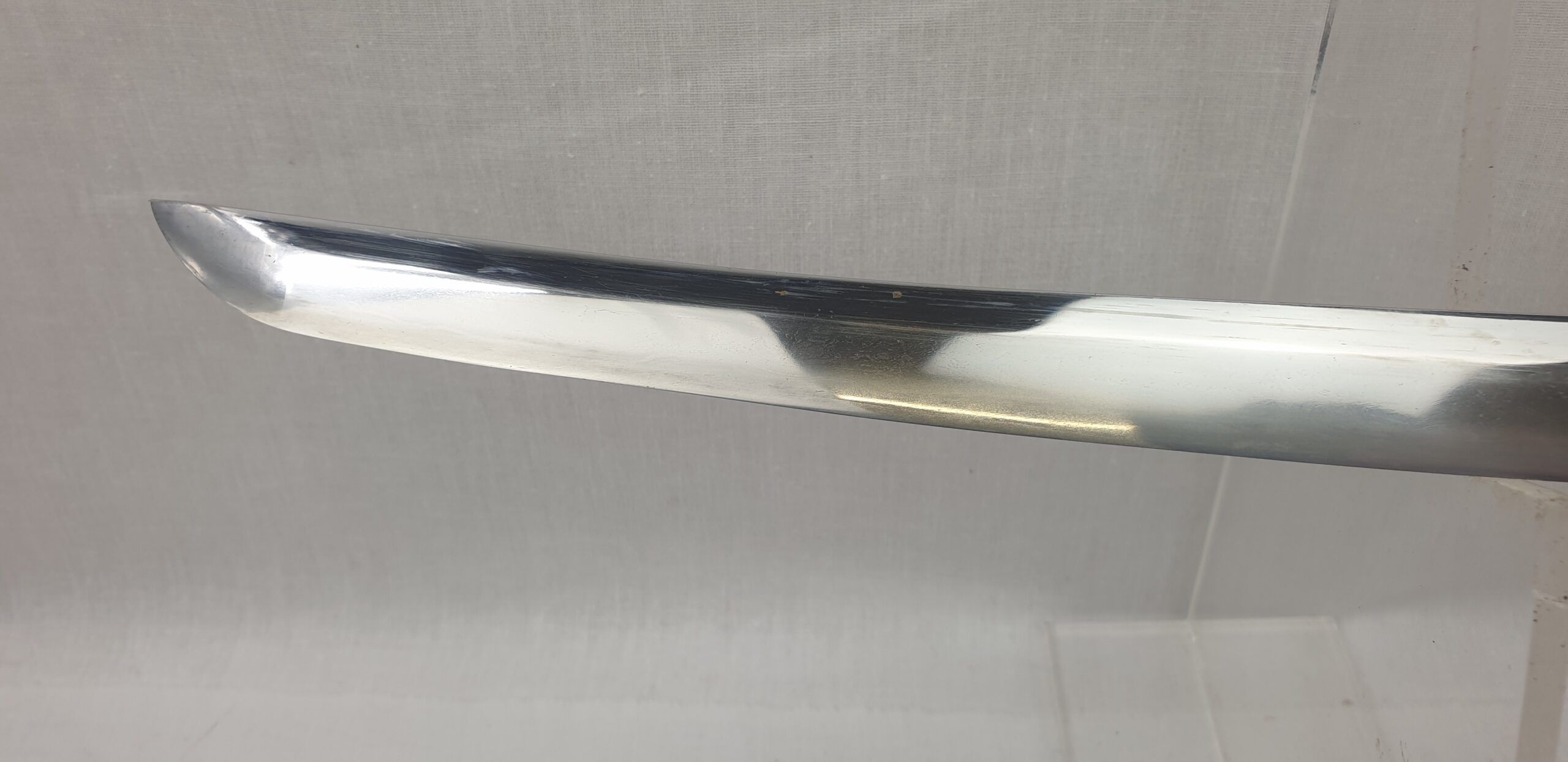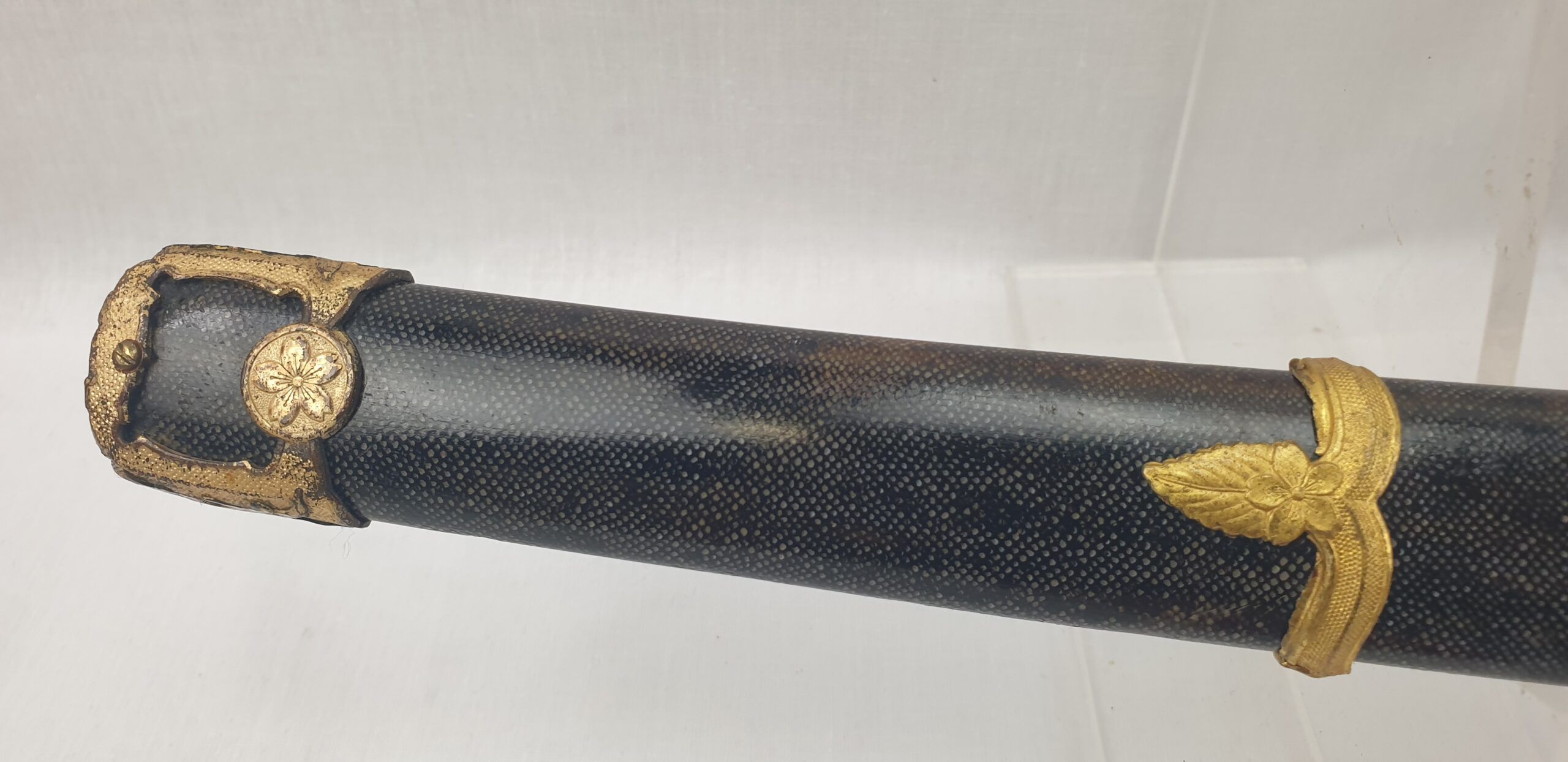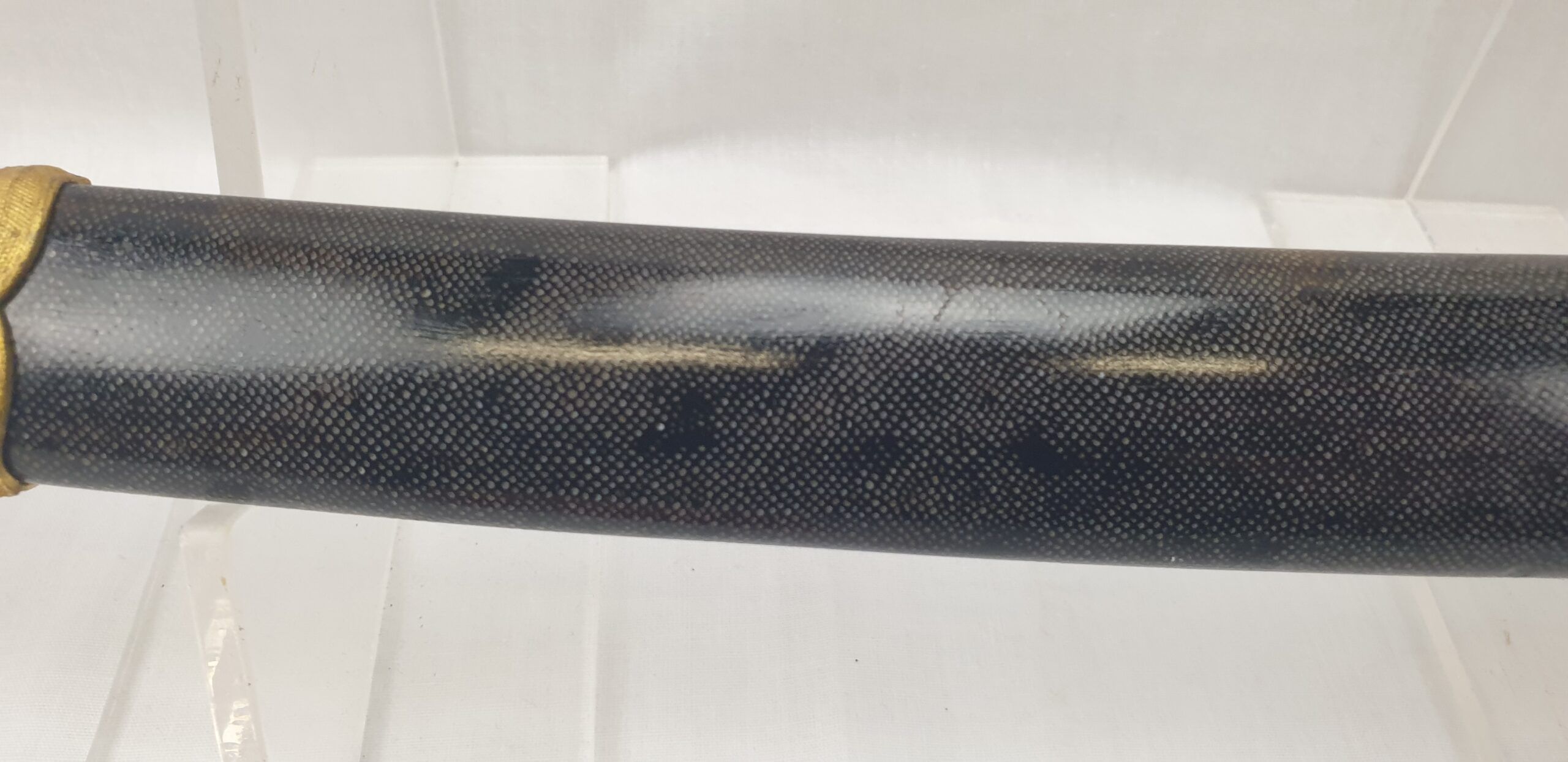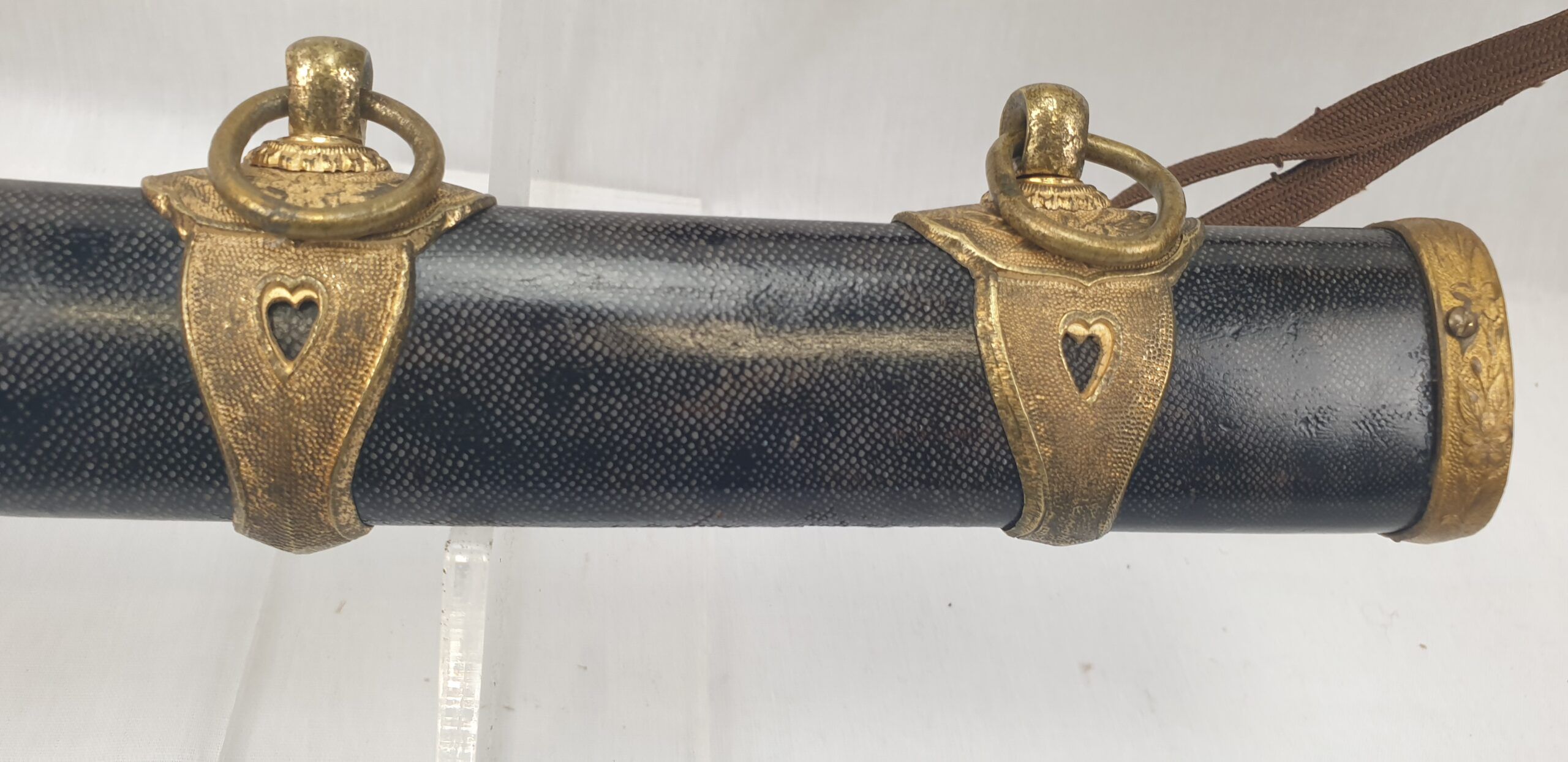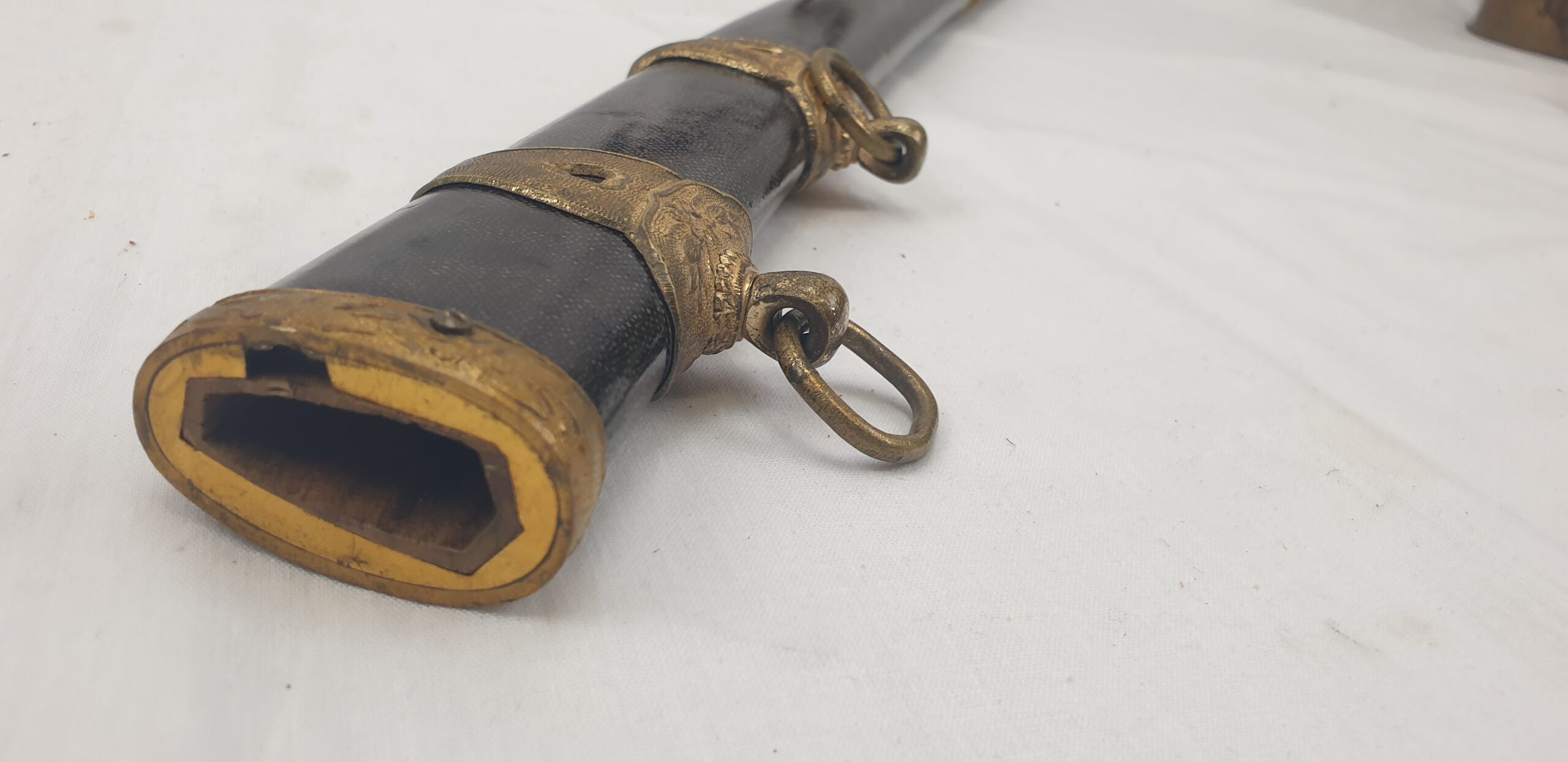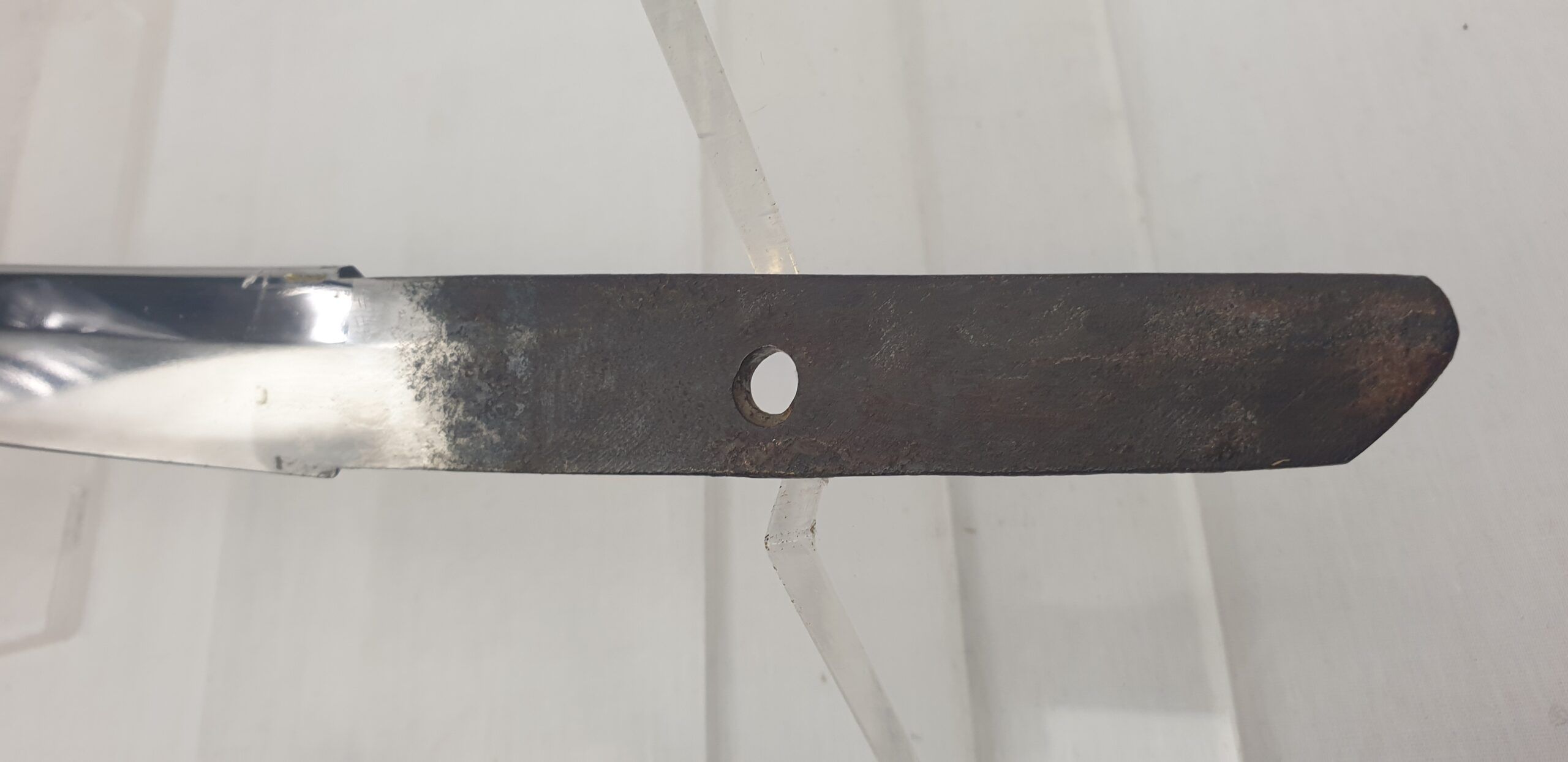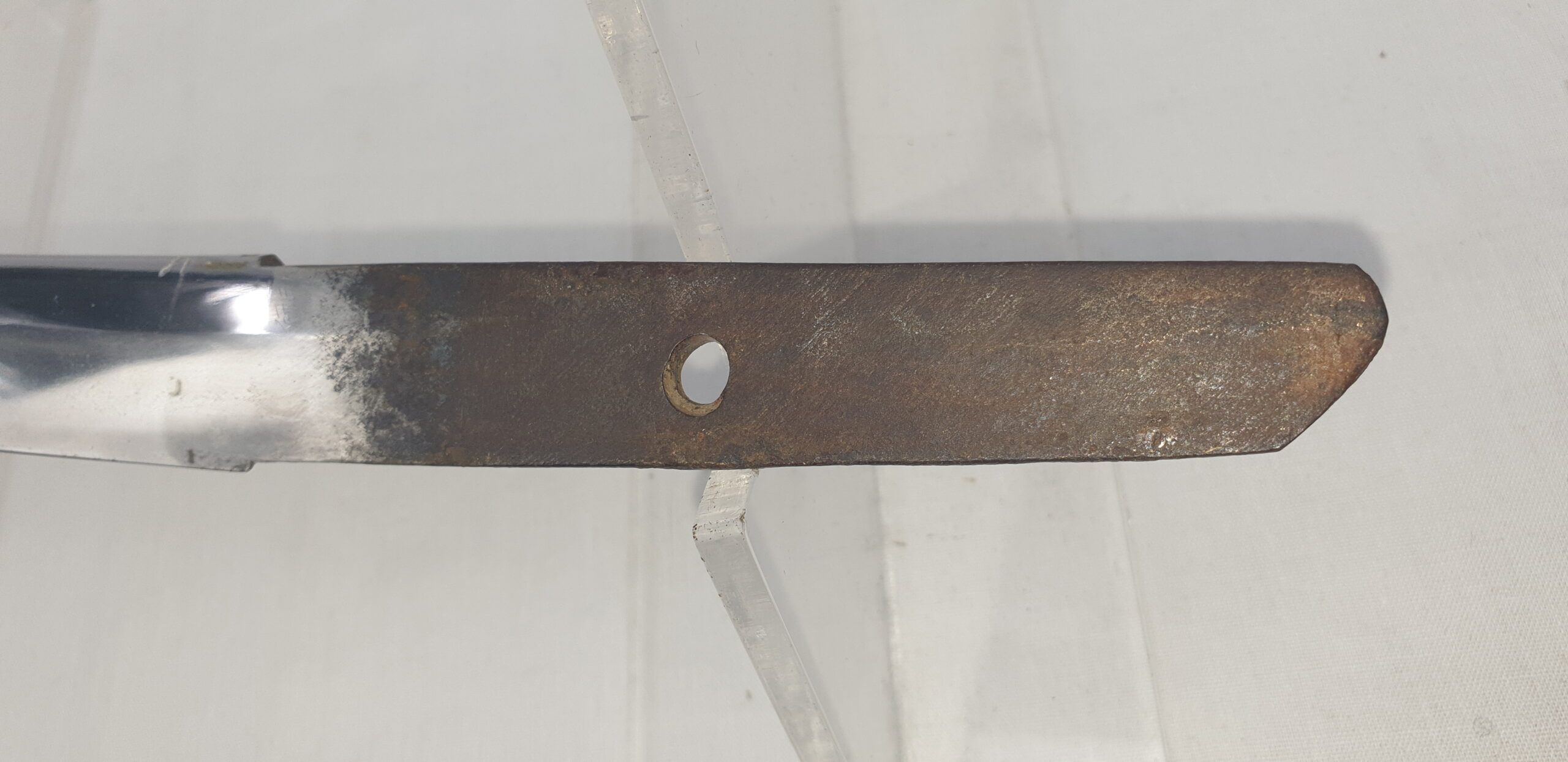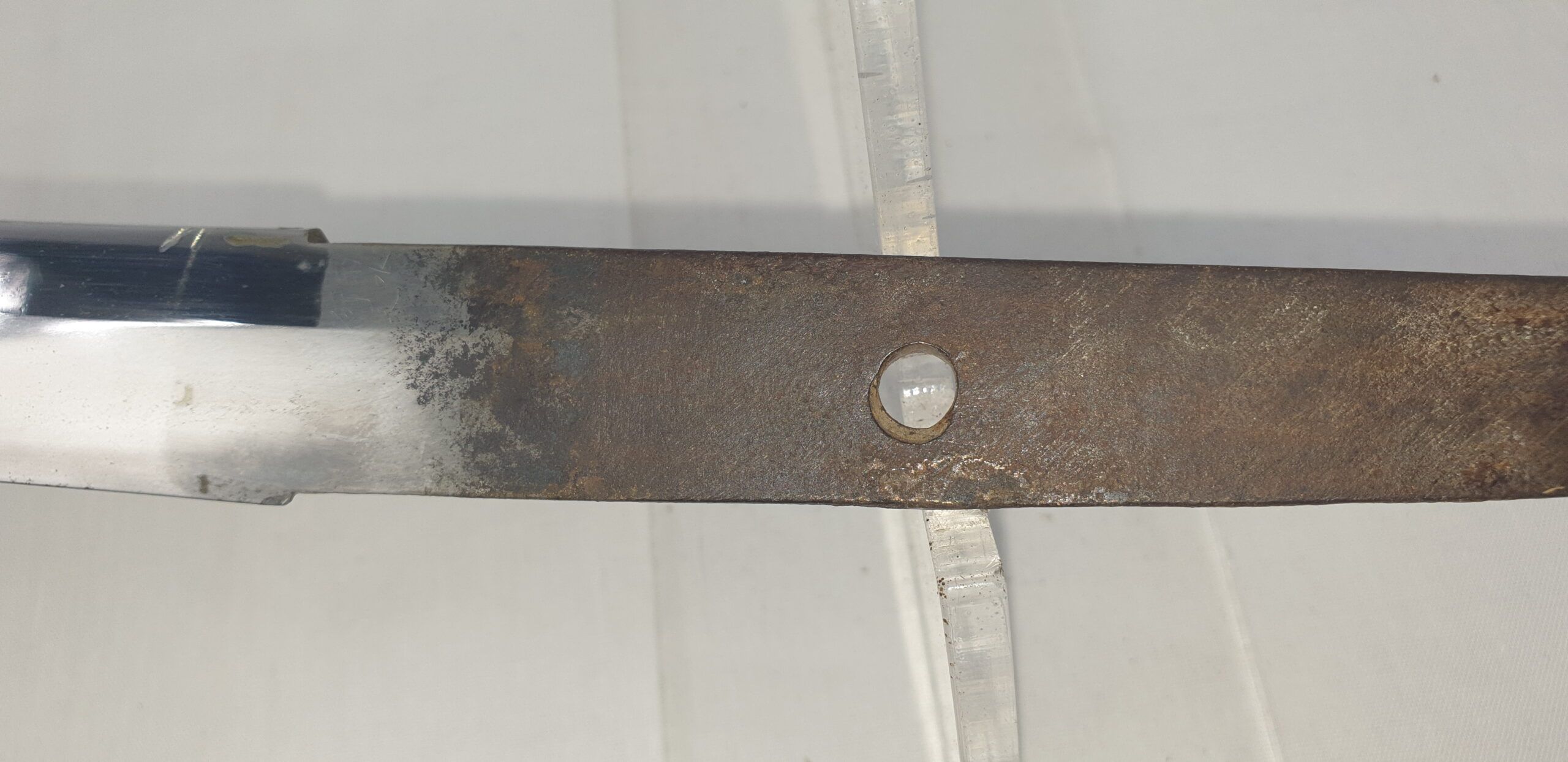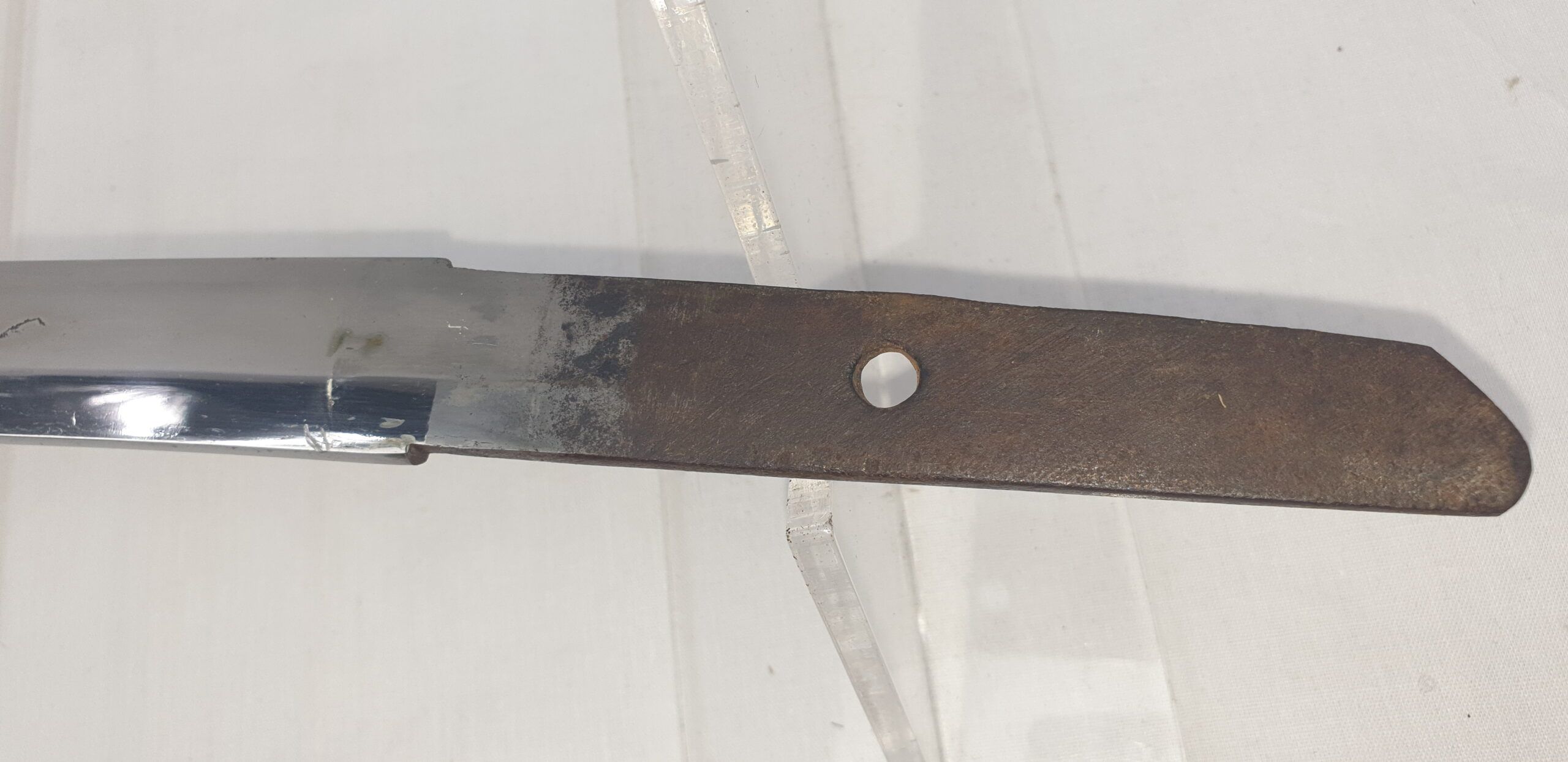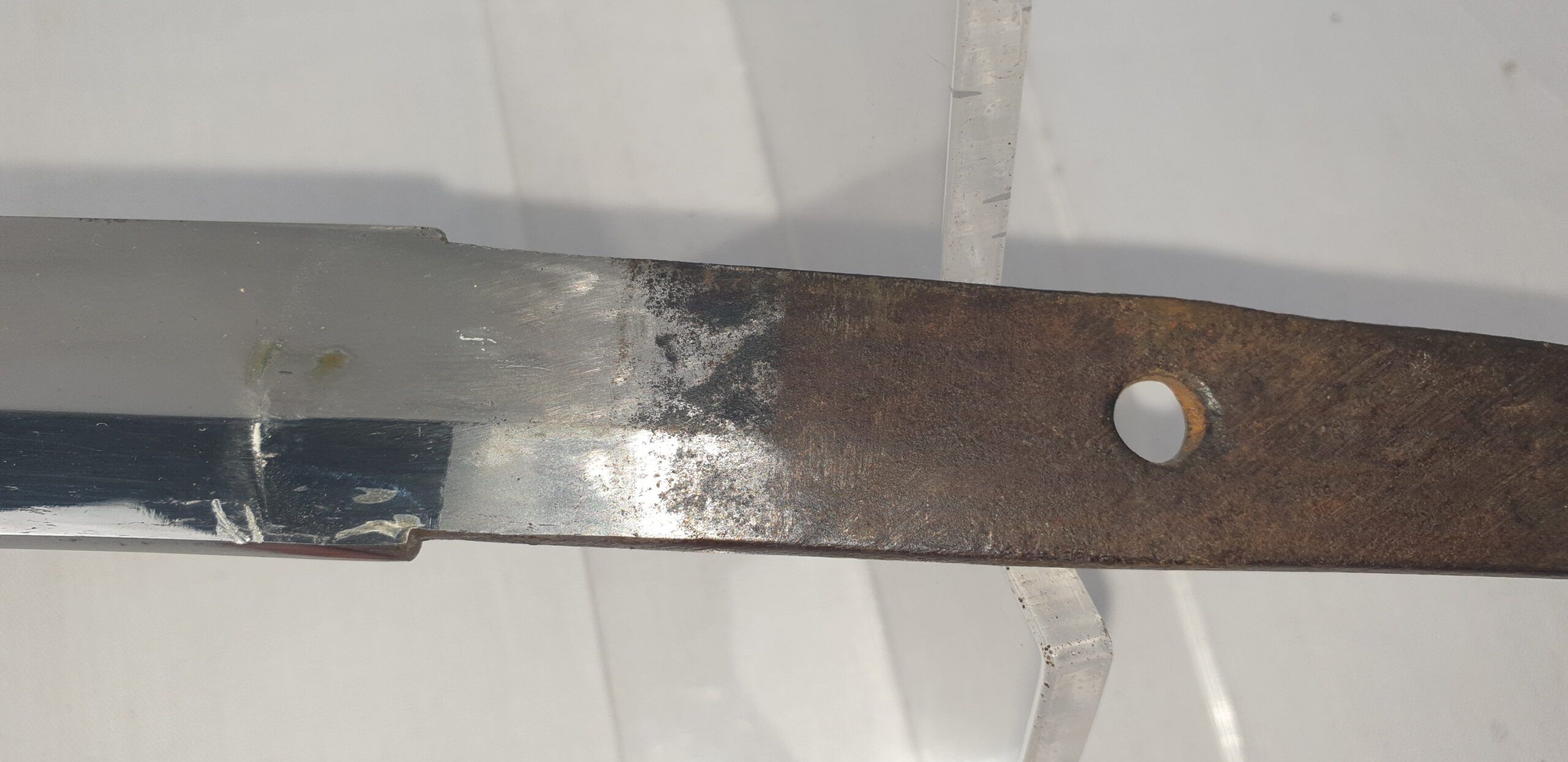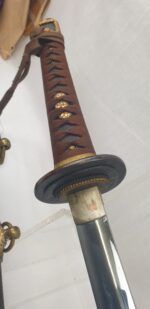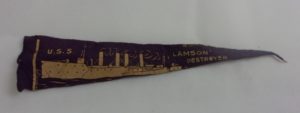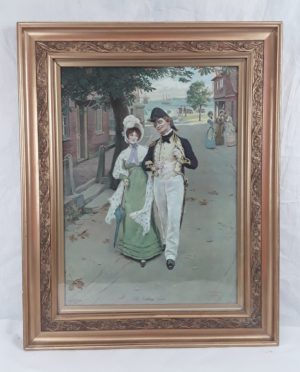~ 16th-17th Century Wakizashi Japanese Epoch of Unification Sword with WW2 Hirohito Naval Officer Fittings ~
A beautiful sword dating back to the time of the great heroes of Japan, Oda Nobunaga (1534-1582), Toyotomi Hideyoshi (1537-1598), and Tokugawa Ieyasu (1543-1616) who transformed Japan from a country plagued by political fragmentation, social upheaval, and military conflict into one that was united, secure, and peaceful. The epoch of unification over which they presided is commonly called the Azuchi-Momoyama period (1568-1615) after the sites of castles associated with them.
The piece is in very good shape with the hamon still visible and with some activities on the blade, as can be noticed in the pictures.
The Fittings are WW2 naval ones, making this a family blade passed over through time.
~ Condition ~
The tang remains free of damage and the bade and fittings are excellent.
An overall wonderful example.
~ Historical Context ~
The wakizashi is often described as a shorter sword than the katana, with a blade length typically between 30 and 60 centimeters (12 and 24 inches). It served various purposes:
Secondary Weapon: It was used as a backup weapon and for close-quarters combat, where longer swords like the katana were less effective.
Seppuku Sword: The wakizashi was also used in the ritual of seppuku (honorable suicide), a practice among samurai to restore honor for themselves or their family.
Social Status Symbol: Possession of a daisho (the pairing of a katana and a wakizashi) symbolized the social power and personal honor of the samurai class.
Role in the Unification of Japan
During the period of unification, prominent warlords such as Oda Nobunaga, Toyotomi Hideyoshi, and Tokugawa Ieyasu utilized the martial prowess of the samurai, and by extension their swords, to consolidate power and eventually unify Japan.
Oda Nobunaga made significant strides towards unification through military innovation and strategic alliances. The samurai under his command, armed with katana and wakizashi, were key to his victories.
Toyotomi Hideyoshi continued Nobunaga’s work, further centralizing power and pacifying the land. His samurai armies, similarly equipped, played a crucial role in his campaigns.
Tokugawa Ieyasu, the founder of the Tokugawa shogunate, finally achieved complete unification after his victory at the Battle of Sekigahara in 1600. The samurai class, with their swords, became enforcers of the Pax Tokugawa, a period of relative peace that followed.
Evolution and Legacy
The unification of Japan led to significant changes in the social and political landscape, impacting the role and significance of the samurai and their swords. With the establishment of the Tokugawa shogunate and the imposition of a strict class system, the samurai gradually transformed from a warrior class to a bureaucratic one. This change also influenced the cultural and aesthetic aspects of sword-making, as the demand for weapons of war decreased and the emphasis on the sword as an art form and status symbol increased.
The wakizashi, like the katana, remains a symbol of the samurai spirit and Japanese culture, embodying the values of honor, discipline, and mastery. Its history during the epoch of unification highlights its importance not just as a weapon of war, but as a key element in the social and political dynamics of feudal Japan.
Ref no. JAQAC00_9821150682



